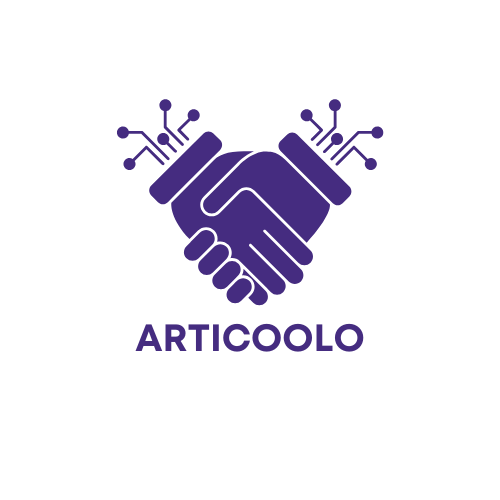Understanding Customer Acquisition Platforms
Getting customers has always been at the heart of business growth, but in 2025, it’s more complex and competitive than ever. Traditional advertising channels are saturated, consumers are more skeptical and data privacy regulations have made it harder for businesses to reach the right audience. Businesses are now under pressure to adopt smarter, data-driven approaches that not only get new customers but also make processes sustainable.
This is where customer acquisition platforms come in. These platforms centralize all acquisition activities—advertising, referral programs, analytics, personalization and more—into one system. By offering automation, scalability and measurable results, they allow businesses to turn acquisition into a predictable, repeatable process rather than a gamble. For businesses to thrive in today’s competitive landscape, investing in a customer acquisition platform is quickly becoming a “must-have” not a “nice-to-have”.
What Is a Customer Acquisition Platform?
At its core, a customer acquisition platform is a software solution that brings together the tools and strategies to attract and convert potential customers. In the past, companies used a patchwork of separate tools—email marketing, social media scheduling apps, analytics dashboards, referral systems—which often led to inefficiencies and disjointed campaigns. A unified platform removes those silos and gives businesses one source of truth for their customer acquisition efforts.
For example, instead of guessing whether a customer came from an Instagram ad or a referral link, the platform provides real time attribution data. It not only shows where leads are coming from, but also evaluates the quality of those leads so businesses can make smarter decisions. Many modern platforms also integrate artificial intelligence to forecast trends, personalize messages and allocate budgets with precision.
Ultimately, a customer acquisition platform is more than just a marketing tool—it’s a growth engine that aligns marketing, sales and customer success teams around one goal: getting the right customers at the right cost.
Core Features of Customer Acquisition Platforms
The strength of customer acquisition platforms lies in the depth of their features. Businesses using these tools can expect capabilities that touch every stage of the acquisition journey.
- Cross-Channel Campaign Management: Businesses can manage search ads, social campaigns, referral initiatives and influencer partnerships all from one interface. This means consistency of messaging and saves hours switching between tools.
- Data Analytics & Attribution: Multi-touch attribution models show which channels contribute to a conversion. For example a lead might see a LinkedIn ad, then engage with an email and finally convert after a referral link. Understanding this journey helps refine strategy.
- Personalization Engines: Customers today expect relevance. Platforms use AI and machine learning to deliver tailored experiences through a range of mediums, including dynamic website content, personalized email recommendations and targeted ad creatives.
- Automation Tools: From scheduling campaigns to nurturing leads with pre-set email sequences, automation eliminates repetitive tasks so teams can focus on creativity and strategy.
- CRM and eCommerce Integrations: A customer acquisition platform integrates with existing systems so customer data flows smoothly from marketing to sales. This gives a complete view of the customer lifecycle.
- Referral and Loyalty Capabilities: Getting existing customers to bring in new ones is one of the most cost-effective strategies. Many platforms now embed referral engines and loyalty programs into their systems.
Together, these features mean businesses can run campaigns that are measurable, scalable and optimized for impact.
Key Benefits for Businesses
Adopting a customer acquisition platform brings several big benefits, many of which go beyond immediate cost savings.
- Lower Acquisition Costs: By eliminating redundant tools and optimizing campaign spend, businesses reduce their customer acquisition cost (CAC). Instead of guessing where money is being wasted, the platform provides visibility and allows for precise budget adjustments.
- Improved Conversion Rates: Personalized campaigns resonate more with audiences so engagement and conversion rates are higher. A platform means marketing dollars are spent reaching the right people with the right message.
- Scalability for Growth: As businesses expand into new markets or scale their operations, the platform adapts without requiring a complete overhaul of the marketing tech stack. This is especially important for startups moving into mid-market or enterprise.
- Data-Driven Decision Making: Gone are the days of relying on intuition alone. With detailed dashboards and reporting, businesses get actionable insights into what’s working, what’s not and how to refine strategies.
- Better Customer Retention: Many platforms don’t stop at acquisition; they also have retention features like loyalty and referral programs so once customers are acquired they stay engaged and loyal.
These benefits make customer acquisition platforms essential for growth in industries from SaaS to eCommerce to retail and beyond.
How to Choose the Right Platform
Not all customer acquisition platforms are created equal. The best one for your business depends on size, industry and strategy.

Consider the following when evaluating options:
- Budget Alignment: Look beyond subscription costs and consider total cost of ownership, including potential savings from consolidating other tools.
- Ease of Use: A platform should simplify workflows, not complicate them. User-friendly dashboards mean quicker onboarding and less reliance on technical staff.
- Integration Capabilities: Ensure the platform connects with CRM, analytics, eCommerce and automation systems. Gaps in integration mean inefficiencies.
- Industry Specialization: Some platforms focus on SaaS, others on retail or eCommerce. Choose one that’s tailored to your industry.
- Scalability: How will the platform handle future growth? Will it still serve you when your lead volume doubles or when you expand into new regions?
For example, a customer acquisition platform like Mention Me is great for brands focused on referral-driven growth, while enterprise solutions like Salesforce Marketing Cloud offer more advanced lifecycle management.
Examples of Customer Acquisition Platforms
Several customer acquisition platforms dominate the market in 2025. Each has its strengths and use cases:
- Mention Me: A referral-first solution that turns customers into advocates. Retailers and eCommerce brands use it to tap into the power of word-of-mouth, one of the most trusted acquisition channels.
- HubSpot Marketing Hub: A favorite for SMBs and growing SaaS companies, HubSpot offers inbound marketing, automation and analytics in one ecosystem.
- Salesforce Marketing Cloud: Designed for large enterprises, it combines acquisition with advanced personalization and lifecycle management.
- ReferralCandy: Great for small to mid-sized eCommerce businesses offering simple yet effective referral marketing.
- Marketo Engage: Known for automation and personalization at scale, it’s widely used by B2B marketers.
By understanding the strengths and weaknesses of these platforms, businesses can better align their choice with their growth strategy and industry focus.
Considerations
While the benefits are many, customer acquisition platforms can also come with challenges:
- Data Privacy Compliance: As governments tighten regulations, businesses must ensure platforms comply with GDPR, CCPA and other laws. Mishandling customer data can mean big fines and reputational damage.
- Integration Complexity: Legacy systems and old CRMs may not connect seamlessly, resulting in silos of customer data.
- Cost Barriers: While long-term savings are clear, the upfront investment in enterprise platforms can be high for smaller businesses.
- Risk of Over-Automation: Over-reliance on automation can lead to generic, robotic messaging that alienates customers. Human creativity is still essential in customer acquisition campaigns.
By preparing for these challenges and adopting a balanced approach, businesses can get the most out of their platforms while minimising risk.
The Future of Customer Acquisition Platforms
The next 10 years will see significant change for customer acquisition platforms. Trends will include:
- AI-Powered Predictions: Platforms will become more proactive, predicting customer behaviour and suggesting campaign strategies automatically.
- Hyper-Personalization: Content will be dynamically tailored to each customer in real time, creating experiences that feel individual.
- Ethical and Transparent Acquisition: With consumer demand for transparency growing, businesses will need to prove they can handle data responsibly and ethically.
- Unified Lifecycle Management: Acquisition, onboarding, retention and advocacy will merge into one continuous cycle within one platform.
These innovations will turn platforms from marketing tools into growth ecosystems, making them essential for businesses that want to stay competitive.
Customer Acquisition Platforms as Essential Tools
In today’s market, where competition is fierce and customer expectations are higher than ever, a customer acquisition platform is no longer optional – it’s essential. These platforms provide the scalability, automation and intelligence to turn acquisition from a fragmented effort into a growth engine.
For businesses looking to future-proof their growth strategies, adopting a solution like Mention Me’s customer acquisition platform is a smart first step. By evaluating options, addressing challenges and staying ahead of the curve businesses, can create sustainable acquisition strategies for long-term success.














Discussion about this post